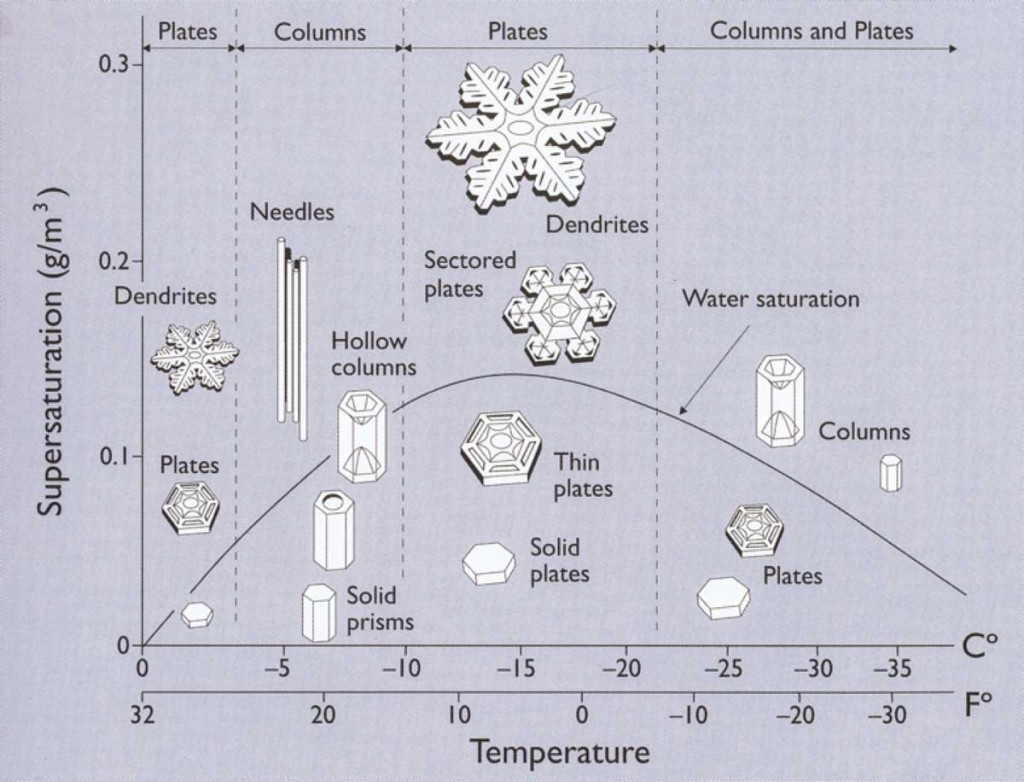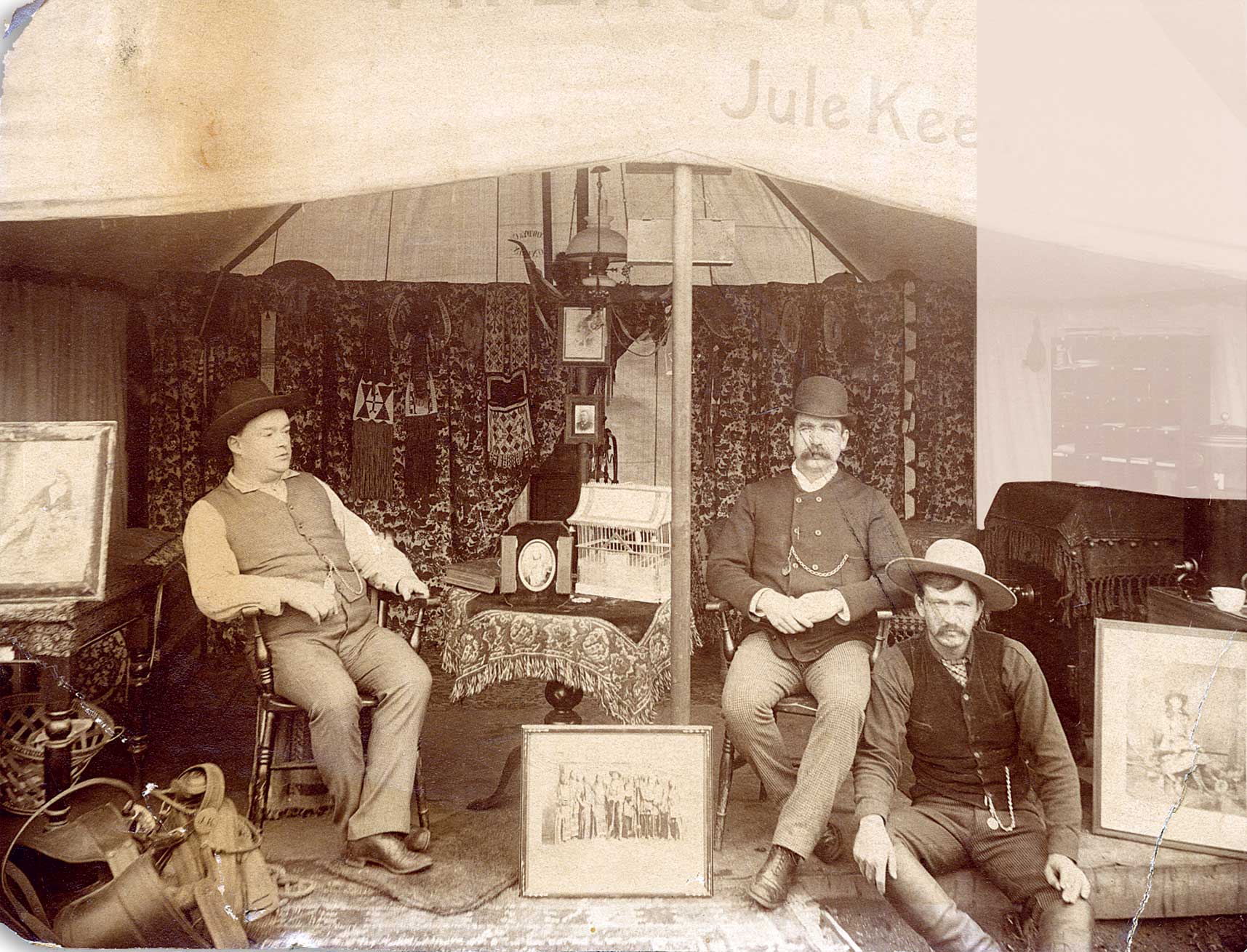Snowflakes: Miniature Marvels
20 Dec 2014
Is it true that no two are identical?
By Thomas W. Schlatter The next time it snows, catch some of the falling snow on a patch of black velvet and examine it with a good magnifying glass. You may see pristine ice crystals, fragments of crystals, and larger flakes made up of multiple crystals—sometimes up to a hundred—stuck together. Always striking is the intricate detail and practically infinite variety of individual ice crystals. Have you ever wondered how this happens? [pp_gallery gallery_id="1680" width="130" height="130"] Left: A dendritic crystal. Delicate star-like crystals like this grow more rapidly than any other ice crystal when the temperature is about -15°C and the vapor content quite high. If the air is dense with these crystals, they collide, their arms interlock, and they form flakes that can range up to silver-dollar size. This is the fluffiest snow of all—the powder snow that skiers dream about. Melt 10 inches of this snow and you get a puddle only 0.3 inches deep. Photo Credit: Shutterstock/Image ID: 329007164 Copyright: Alexey Kljatov Center left: A plate crystal with hollows. Plate crystals form at very low temperatures. In Boulder, we see them most often when the surface temperature is 0°F or lower. They pack very well into surprisingly dense snow cover. Melt 10 inches of this snow and you might get more than an inch of water. Center right: A dendritic crystal is practically smothered by the thousands of cloud droplets that it has collected. This crystal is very heavily rimed but still recognizable. Right: This is fully developed graupel, or snow pellets. Any trace of the crystal around which it formed has long since been obliterated.Some fun facts about snow and ice crystals
1
To form, ice crystals need a particular environment, and below-freezing temperatures are just the start. In the air, a crystal can form when water vapor molecules attach to a microscopic particle of just the right sort for growing ice crystals. Such particles have been detected in samples of soot, mineral dust, volcanic ash, pollen, and even airborne fungal and bacterial cells.2
Ice crystals can take the form of plates, needles, dendrites (branching, treelike shapes), columns and more. Their shape depends on the temperature and the water-vapor content (“supersaturation” on the graph below) within a cloud.3
An ice crystal in a cloud changes shape as it falls, and this, too, depends on its environment. For example, it may begin to grow as a simple plate crystal high in the cloud, where temperatures are very cold. Later, it may fall through a layer of cloud that is -15°C (5°F) and very high in vapor content. It will then begin to grow as a dendrite. Still lower in the cloud, the growth pattern may change yet again. By the time it reaches the earth, the crystal will have encoded within its structure everywhere it has been.4
Sometimes the record of growth is systematically erased. If a falling ice crystal collides with a cloud droplet of below-freezing water, the cloud droplet instantly freezes to the surface of the ice crystal in a process called riming. If riming continues, tiny dots of frozen droplets appear on the surface of the crystal. The droplets may accumulate by the thousands, completely cover the crystal surface, and eventually hide its shape. What falls to earth is called a snow pellet or graupel. It resembles tiny balls of Styrofoam that bounce off the ground.5
If you examine fresh-fallen snow, you quickly realize that perfect single crystals are the exception rather than the rule. Malformed crystals, fragments of crystals broken by the wind or formed during collisions, rimed crystals, partially melted or evaporated crystals, and large clumps of crystals stuck together in flakes are much more common.6
Two ice crystals can be similar, but not identical. In 1988, Nancy C. Knight, a meteorologist at the National Center for Atmospheric Research (NCAR), published a photo of two columnar crystals, attached like Siamese twins, which had been collected by research aircraft near 20,000 ft. They had a fairly complicated structure—nothing compared to the filigreed arms of a dendritic crystal, but to the eye they appeared quite similar. To Knight’s surprise, this photo received national attention because of the common assertion, “No two snowflakes are alike.” If the two crystals were attached nearly from the time they formed—and we don’t know if that’s true—they would have followed almost identical trajectories (to within millimeters), and one would expect them to be quite similar. But identical at the molecular level? No. A typical snow crystal contains 1018, or a billion billions, of water molecules. These molecules attach themselves to the crystal lattice one-by-one as the crystal grows, but randomness in the attachment process is inevitable, even in very specific environments. Thus it is inconceivable that two crystals could be identical. So, next time you have a chance, take a close look at the crystals and enjoy their exquisite forms. They are as interesting and varied as the human face.
Tom Schlatter is a (mostly) retired meteorologist at NOAA’s Earth System Research Laboratory in Boulder, and he is also an affiliate of the Cooperative Institute for Research in Environmental Sciences (CIRES). Self-described as a “weather freak,” he has written a question-and-answer column on weather and climate for Weatherwise magazine since 1980. Further reading: Ken Libbrecht’s Field Guide to Snowflakes by Kenneth Libbrecht, 2006, Voyageur Press, St. Paul, Minn., 112 pages.












